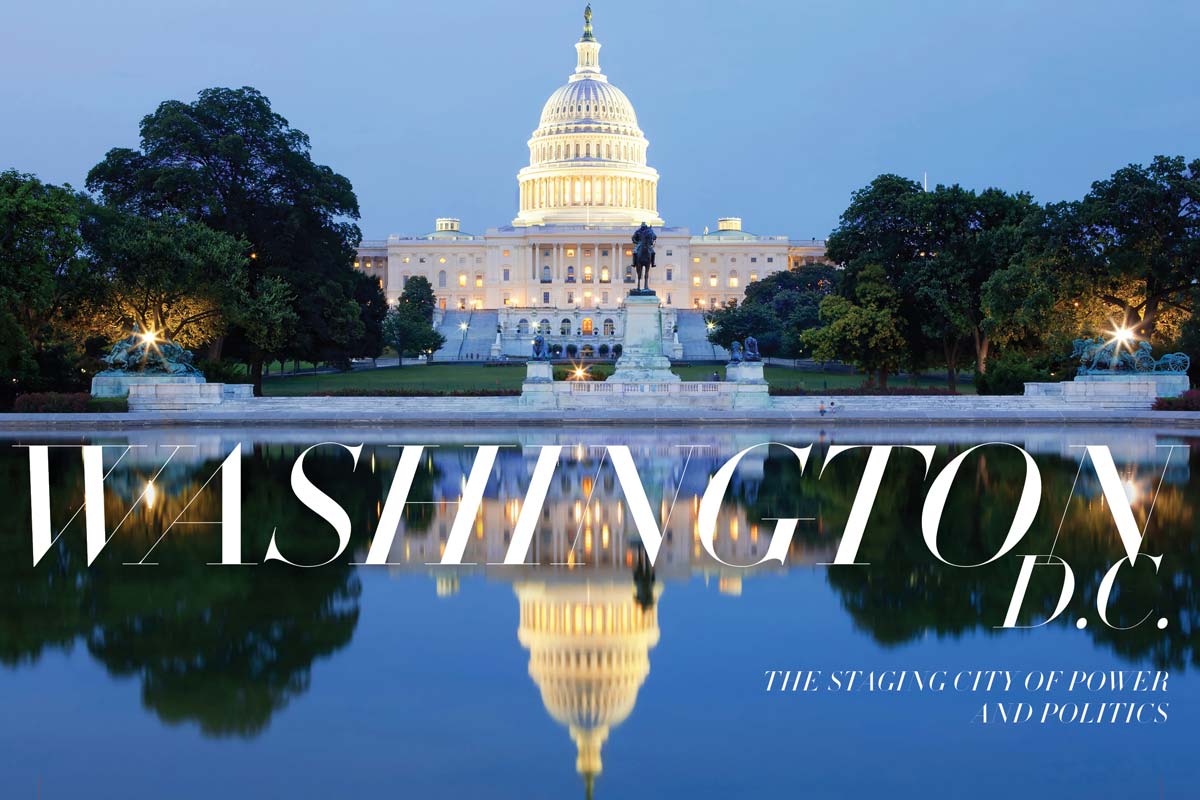
Washington, D.C. breathes power and politics. It is probably the most influential and powerful capital in the world followed by the counterparts of Beijing and Moscow.
Washington, D.C. breathes power and politics. It is probably the most influential and powerful capital in the world followed by the counterparts of Beijing and Moscow. In Washington, D.C., the iconic branches of the White House, the Capitol, and the Supreme Court stand as neoclassical monuments and are good reasons to visit the town named after George Washington in honor of the first President of the United States.
Founded in 1791, the capital, located along the Potomac River on the country’s East Coast, has a population of over 6 million people. Besides the three branches, the city is also home to 176 foreign embassies, lobby groups, and the headquarters of international organizations.
Washington, D.C. is the nerve center of the nation and the wellspring of its power. It is where critical decisions are made, decisions that have a massive influence on the world.
Visiting the city
However, with so many historical places to visit in this city, one is considered the most interesting: the famous White House. For Americans wanting to go on a tour of it, tickets should be requested six months in advance through their senator’s office or that of their representative. International visitors need to contact their embassy far in advance to request a tour of the White House.
In 2016, Washington DC welcomed 22 million of visitors, setting a new record for the city. From New York the number of tourists who visited Washington DC went up to 9.8 million, and from Miami 5.38 million. Both are considered to be hub cities. Also in 2016, Washington DC received-for the first time-a considerable number of Chinese visitors that surpassed all other overseas countries with an impressive 304 thousand tourists.

Smithsonian attractions
Some major attractions in Washington DC do not require tickets and are free to the public. Among them are the Smithsonian Museums, the Smithsonian National Zoo, the monuments on the National Mall, and the Gallerie of Art. All of these venues are free. Some other attractions require tickets such as the International Spy Museum, Madame Tussaud’s, and the US Capitol.
3,000 Cherry Blossoms, The gift from Tokyo
In 1912, the mayor of Tokyo gave 3,000 cherry blossom trees to the city of Washington DC. Later on, when the cherries started to blossom, the city created a festival. It is a festival of beauty that promotes unique events on the National Mall.
A majority of restaurants, street foods, and bars are featured along the cherry blossom tree location. There is also an event named the National Cherry Blossom Festival Parade.
Architecture
The District of Columbia is where the most impressive buildings reside such as the White House, the United States Capitol, the Washington National Cathedral, the Lincoln and Jefferson Memorials, and Veterans Memorial.
The unique architecture in this city is of a neoclassical, Gothic, and Georgian style that is also complemented by modern buildings. Outside downtown Washington, the architecture has various beautiful styles of Victorian buildings.
The prominent areas developed after the Civil War kept the Victorian and Federalist style with the well-known Row Houses.The most significant building in the District of Georgetown is that of Ronald Regan at 3.1 million square feet.
Another “must see” is the Georgetown University located in the city. Whatever you go, Washington, DC, breathes power and politics. Besides all the monuments and numerous attractions, Washington, DC, is a beautiful city with multiple options for all its visitors.
It is the powerful stage of the most critical decisions in the country. n
